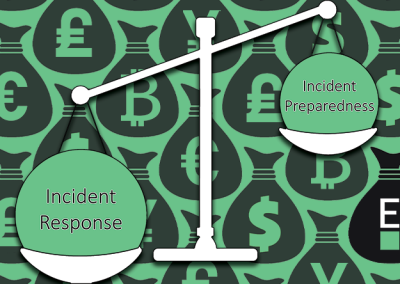In his new biography of Sam Bankman-Fried, author Michael Lewis takes the controversial step of painting SBF as more sloppily-dressed, right-place-wrong-time pioneer than deceitful anti-hero, and FTX as more sloppily-run, wrong place-right-time crypto exchange than fraudulent enterprise.
The jury is still out on the former but the latter was settled recently when former FTX CTO Gary Wang admitted in court that the $100 million FTX claimed to have set aside as self insurance to protect account holders in the event of losses due to sudden liquidation events was largely a fiction. Wang admitted that the true value of the FTX Backstop Fund was somewhere between $0 and $5 million, and that the fund’s dynamic value, as displayed on the FTX website, was arrived at via random number generator.
Self insurance is an uncommon commercial risk transfer strategy because it requires deep cash reserves and an equally deep risk assessment expertise. It makes much more sense to outsource that function, as often just a fraction of the funds held as self insurance would cover many years of premiums paid to a third party insurer, spreading out the cost of potential losses while putting the rest of that money to better use.
This is not to say self insurance is inherently a bad business decision, there are certainly a number of circumstances when self insurance does make sense. Established businesses with a large number of employees, deep financial reserves and robust internal risk management that can look upon years if not decades of historical risk data- criteria that would apply to many Fortune 500 firms- would be wise to consider the self insurance route.
Unfortunately, with the rare exception of deep financial reserves, none of those criteria apply to Web3: it is a sector that tends to be both unstable and poorly understood, with fluctuations regularly occurring outside of any typical rhyme or reason.
While any relatively new industry lacking an established history of risk would generally be an ill-advised candidate for self-insurance, there are a number of specific things about Crypto which lend it to be a particularly bad match with self insurance-
Crypto loss events tend to affect masses
A simple example of self insurance is the bond a contractor must maintain that would compensate a homeowner for damage the contractor may cause to their house. This sort of policy works because a contractor generally doesn’t damage a number of clients’ homes simultaneously, leading to a run on the bond that may quickly exhaust it. In contrast, when a crypto custodian is hacked or a defi platform exploited, losses are usually experienced by a great many users at the same time, likely rendering the self insurance fund insufficient. Of course customers aren’t thinking that way when evaluating the safety of an exchange—they’re looking at $100 million and feeling confident that it’s more than enough to cover their own deposits, without considering that they’ll be one of a great many affected.
Crypto loss events tend to be huge
Even if FTX did have the claimed $100m backing up its self insurance fund, it would only have been a drop in the bucket compared to the billions in actual losses that occured. These days, hacks netting less than $100 million are classified as relatively minor and often fail to garner more than passing attention. The chances that a crypto firm’s self insurance fund could afford to match the outsized amounts taken in recent hacks are slim, as hacks tend to target a large chunk of the targeted businesses total assets.
Crooked crypto insiders are crooked
Should the loss event occur at the hands of an insider, it’s hard to imagine they’d have any reservations about draining a juicy self insurance fund on the way out as well. In the all-too-common event that the loss is a rug pull or other inside job, self insurance funds are likely to be able to be hacked as well, leaving the self insurance fund as no help to those affected but an additional boon to the attackers.
Crypto risks are complex
Successful crypto founders are more likely to raise capital because of their vision and charisma than their risk management expertise. The youth of the Crypto industry means that even the most tenured crypto-natives would only have around 15 years experience managing the complex operational, business and technical risks inherent to crypto, and in those 15 years successful risk standards and practices have yet to be established. This leaves risk management in crypto as much of a guessing game, with the odds naturally stacked against any single operator.
Wheras risk decisions made by a third party insurer like Evertas are able to view a company objectively, self insurance risk is usually decided upon by the company itself. Many times smaller and founder run companies can have an optimistic and unrealistic view of their potential pitfalls, causing them to underestimate the amount of insurance reserves necessary to keep their company afloat in an emergency. Wheras established third party insurers with skin in the game tend to err on the side of caution, assuring there is always enough coverage for whatever may arise.
The claims process of self insurance is also administered by the company itself, and the same subjective nature comes into play in regards to payouts. When deciding who to pay and when, human bias will often cause a company to rule in favor of itself at the expense of their clients. Claims administered by a third party insurer like Evertas are handled quickly and dispassionately, according to the terms of an unambiguous policy contract.
The self insurance illusion
While Web3 claims of crypto self insurance may provide the illusion of protection, the reality is that in many cases those self insured policies are little better than having no insurance at all. In order for DeFi to thrive, Web3 innovators and their customers need true assurance that their risk is mitgiated as effectively as possible. When it comes to insurance, only the objective third party coverage that Evertas provides via our A+ rated crypto policies can truly administer the sort of risk transference that fairly considers all parties involved. Reach out to us today to learn more.




